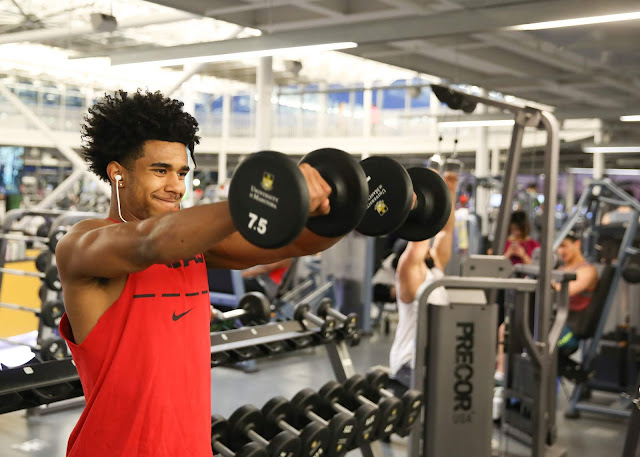Why Everyone Needs Unilateral Training In Their Lives
by Adam Toffan, M.Sc, NSCA-CSCS, CSEP-CPT Assistant Fitness Training and Assessment Coordinator, Recreation Services at the University of Manitoba
When focusing on strength there’s a lot of emphasis on the big lifts, and rightfully so! Big multi-joint lifts such as the squat and deadlift should be staples in your plan. However, you should also make room for unilateral exercises! Unilateral exercises focus on one side of the body at a time, such as one arm rows or lunges. We believe almost anyone can benefit from incorporating unilateral training to their exercise regimen and here’s why:
Try adding a few unilateral exercises to your routine and reap the benefits. If you are unsure how you can work these into your program, come see one of our CSEP certified trainers. We offer a variety of personal training services. Learn more by visiting our Personal Training Packages & Assessments webpage.
When focusing on strength there’s a lot of emphasis on the big lifts, and rightfully so! Big multi-joint lifts such as the squat and deadlift should be staples in your plan. However, you should also make room for unilateral exercises! Unilateral exercises focus on one side of the body at a time, such as one arm rows or lunges. We believe almost anyone can benefit from incorporating unilateral training to their exercise regimen and here’s why:
It increases core activation
Imagine doing a one arm row without engaging your core. You’d likely fall off the bench! Unilateral exercises engage the core much more since all the load is typically on one side of the body. More core stabilization is required to support the load imbalances and promote sound movement patterns.It corrects muscle imbalance
Most people have a dominant side. If you’re right-handed, it’s usually your right side. While some strength discrepancy between left and right is normal, large strength imbalances can be an injury risk. Generally speaking, if one side is 15% stronger than the other, you have an imbalance, and it should be addressed. Whether it’s a squat where you put more weight onto your left foot or a seated row where your right arm can pull the cable with more force, bilateral exercises allow your dominant side to do more work which increases the imbalance. Unilateral training will cause a greater overload on the weaker side and increase strength, resulting in less of a discrepancy.It's a more natural range of motion
Nearly all athletic movements are done unilaterally. The ability to move soundly both bilaterally and unilaterally will enhance performance and reduce injury. If too much time is spent with machines or even bilateral free weight exercises, your strength won’t transfer fully to the real world. Your stabilizing muscles won’t develop with the primary movers, and you won’t be able to generate the same amount of force when exerted outside of a bilaterally controlled environment.It decreases the risk of injury
When training unilaterally, the muscles around the joint that stabilize the working limb are called into play. Strengthening these muscles protects against injury whether it’s from sports or a slip on a patch of ice. Strong stabilizers also help the primary muscles to work more efficiently and lift more since the joint is more stable during the range of motion.Unilateral training can benefit BOTH sides
Did you know that exercising one side can increase strength on the opposite side as well? This is called muscle cross education and is sometimes used to help maintain strength in immobilized or injured limbs. The limb doing the work gets most of the benefit, but cross education can lead to about 7.8% improvement in the untrained limb. In case of injury, unilateral training is a great method to help maintain strength during recovery.Try adding a few unilateral exercises to your routine and reap the benefits. If you are unsure how you can work these into your program, come see one of our CSEP certified trainers. We offer a variety of personal training services. Learn more by visiting our Personal Training Packages & Assessments webpage.




Comments
Post a Comment